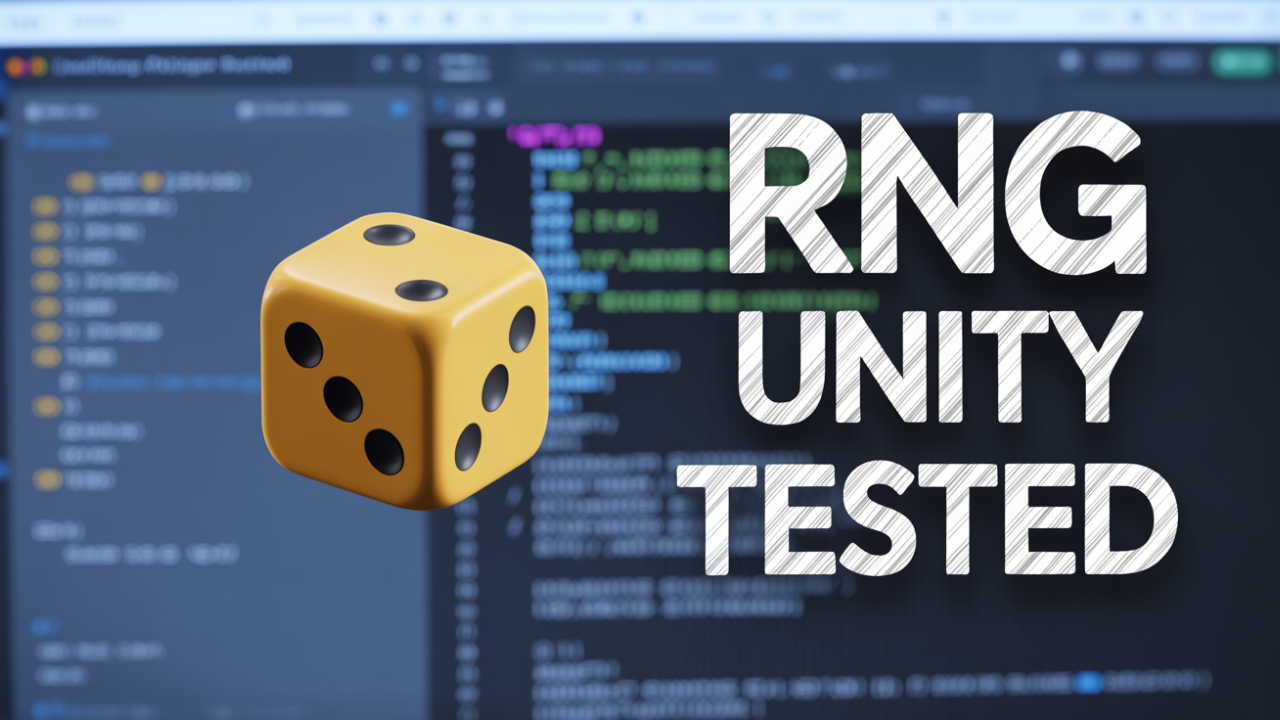
RNG (Random Number Generation) is vital in Unity games for fairness and unpredictability in mechanics like loot drops, AI behavior, and card distribution. To ensure fairness, developers must test RNG using: Seed-based reproducibility for consistent testing. Distribution analysis to check evenness of outcomes. Chi-square tests for statistical fairness. Entropy checks for randomness quality. Unit tests to validate deterministic outcomes with fixed seeds. Avoid common mistakes like inconsistent seeding and mixing RNG sources. For real-money or competitive games, use secure, server-side RNG solutions. Proper RNG testing builds trust, enhances gameplay, and is crucial for regulated gaming environments.
Randomness plays a critical role in many types of games—from loot drops and card draws to AI behavior and procedural generation. But how do we know if the randomness is actually fair, unbiased, and testable?
In this article, we’ll explore how Random Number Generation (RNG) testing is done in Unity, the techniques used to validate randomness, and best practices for building trustworthy game systems—whether you're building a card game like rummy, a loot-based RPG, or a battle royale.
Unity provides its own random number generator through the UnityEngine.Random class, which is built on top of .NET's pseudo-random number generator (PRNG). Here’s how it typically works:
Under the hood, this is deterministic unless you re-seed it, which is great for testing and debugging. You can control the seed to make tests reproducible:
If your RNG system isn’t tested:
Loot drops can feel unfair.
Procedural levels might generate bias.
Players may suspect rigging in competitive games (especially in real-money or high-stakes games).
AI behaviors may seem too predictable or too erratic.
In multiplayer and real-money gaming, RNG fairness is a legal and reputational necessity.
Here are structured ways to test RNG in Unity projects:
Use case: Ensuring predictable behavior for debugging and QA.
✅ Run this test multiple times and ensure output remains the same with the same seed.
Use case: Checking whether your RNG gives a statistically even distribution.
Run your random method thousands of times and count the frequency of each result.
✅ Each number should appear ~16.6% of the time. Minor deviation is normal, but large gaps signal bias.
Use case: Mathematical verification of fairness.
Export your frequency data (from the test above) and run a chi-square test using Python, R, or an Excel plugin.
Expected frequency = Total iterations / Number of outcomes.
✅ The chi-square statistic should be within an acceptable range for the degree of freedom, confirming fairness.
Use case: Measuring randomness quality.
Calculate Shannon entropy of the output. Low entropy = predictable RNG. This is rarely done in Unity itself but is useful for backend RNG systems (e.g., in smart contracts or blockchain gaming).
Use case: Procedural generation, AI randomness.
Write unit tests using a fixed seed to ensure the generated output (map, path, loot) matches a known pattern.
Not setting a seed in tests: Makes bugs hard to reproduce.
Using System.Random and UnityEngine.Random interchangeably: These are different systems and can create test inconsistencies.
Calling RNG during Awake without order control: May cause inconsistencies across different runs.
Not tracking random calls in networked games: In multiplayer, desync can occur if RNG calls aren’t mirrored or seed-synced.
For games involving real money, gambling mechanics, or legal regulation, use cryptographically secure RNG, such as:
System.Security.Cryptography.RandomNumberGenerator in C#
External services like Chainlink VRF or FairPlay APIs
Server-side RNG validation + signed logs
In Unity, you can integrate these for client requests, but always process RNG-sensitive actions on the server for security.
Let’s say you’re dealing cards in a Unity rummy game (like what Sanjay Dey is building). Here's how RNG testing would apply:
Use a fixed seed for deterministic testing of card shuffling.
Verify the randomness of card distribution with frequency and chi-square tests.
Simulate thousands of matches to ensure no player receives an advantage.
Log all seeds and RNG outcomes for audit trails.
Randomness isn’t truly random in programming—it’s pseudo-random. But with proper testing, seeding, and statistical validation, you can build trustworthy, fair, and repeatable systems in Unity.
By integrating these testing strategies into your development pipeline, you elevate your game's integrity, player trust, and production readiness—especially for multiplayer, competitive, or regulated environments.


